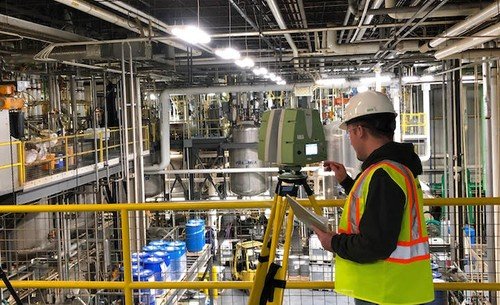Introduction:
The best and most effective application of 3D laser scanning is industrial applications. Because of its accuracy, this technology allows engineers to avoid inconsistencies previously seen only in the construction process by accurately designing MEP (mechanical, electrical, and plumbing) and structural components.
Building facilities using 3D scanning is much better than traditional techniques. Due to its time-saving potential, 3D laser scanning for industrial plants is the most versatile method for such installations. Aggregate data points into point clouds that can be manipulated manually or transformed into an accurate 3D model in CAD or 3D software.
How Does 3d Laser Scanning Benefit Production Plants?
Here, we look at the benefits of laser scanning that can be helpful for industrial plant projects.
- Safety and regulatory compliance
Due to increasing government scrutiny and regulation, employers must build and operate production assets in their own country while constructing and maintaining them.
Laser scanning is becoming increasingly popular to comply with environmental, health, and safety regulations. Industrial laser scanning is generally safer than data collection techniques.
Modern inspection equipment can detect a remote control device, and rapid data acquisition requires less on-site time when proper distance control ensures more screw placement than on-site. In situ production methods can be used safely. These methods are safer in situations where hot water treatment is required.
- Precision deployment
Scanning allows maintenance personnel to identify problems. For example, a scan analyzed by one customer detected the spread of a faulty fire, allowing the customer’s maintenance team to be dispatched directly to the sites without the need to manually inspect the entire facility.
- Risk mitigation
In all industries, there are fraudulent activities that involve costs, schedules, or security escalations that go unchecked because of inadequate demand management procedures or incorrect or poorly prepared records.
Useful for projects where energy is sufficient, site access is expensive or difficult, modular design and infrastructure are used, project schedules require considerable flexibility, and laser scanning processes reduce project risk.
- Improved quality and other benefits
The ability to create better simulations of assets and equipment for training, better visibility into the coordination of different areas of engineering and industrial construction, better visibility into project financing, more analytical and quantitative construction monitoring, and greater flexibility with scope changes.
There are only a few to catch the additional benefits of complete and accurate dimensional documentation based on laser scanning.
- Modelling with a process plan
3D modeling for plants allows operators to manipulate point clouds quickly and accurately, which is essential for changes such as determining the exact location of flanges that connect pipes up to 16 inches in diameter.
Operators select two points on the scanned tube, and the software analyzes the shape of the cylinder to determine the size of the tube. The software models pipes using predefined shapes and turns the pipes into solid objects when completed.
Why is 3d Scanning Only Used for a Small Number of Industrial Plant Projects?
These are some limitations.
Lack of awareness
Despite the recession, the market is still in its early stages, although it has grown by 25–30% over the past five years.
Perceived cost
Traditional methods are too expensive for some applications. The challenge is knowing when it makes sense to jump.
The inertia of old ways
Changing careers is often painful. Organizations are embracing 3D and moving away from traditional 2D processes to realize the full value of laser scanning.
Benefits of laser scanning
There are many benefits to applying technology to your next project. These are the main reasons why your projects can benefit from laser scanning.
- Fast and accurate data collection: Laser scanning records millions of 3D data points per second, providing the most accurate information about a building or structure. Databases are dimensionally accurate, scalable, and shareable, simplifying project design and implementation.
- Eliminate visits and delays: Pages are saved in detail the first time, eliminating the need for repeat visits. Rapid data collection simplifies tasks that require minimal hassle.
- Reduce costs and change orders: A detailed design process is developed from the beginning, speeding up field operations and minimizing changes, delays, and costs. Laser scanning is faster than conventional project design methods.
Scanning can be completed in minutes, much faster than conventional methods, many of which can take hours or even weeks. In addition, completed data analyses allow teams to create more accurate workflows.
- Safe and contact-free: 3D laser scanning for industrial plants collects data from shelves in harsh or dangerous places, helping to prevent worker injuries. Unmarked nature preserves historic sights and monuments intact.
- Improved communication: Communication improves; teams can discuss plans while everyone has access to the same information, creating a collaborative environment.
Finally, 3D laser scanning improves coordination and collaboration in the workplace, making overall decision-making faster and more efficient. Good collaboration helps the project team achieve better communication and the ultimate goal: to create a great project.
Conclusion
Industrial laser scanning simplifies maintenance and repair in factories and service centers and accelerates innovation. The point cloud data from the laser scanner is clear enough to provide specific information about steel pipe bolt properties and information needed to remotely control the plant and maintain peak performance.



